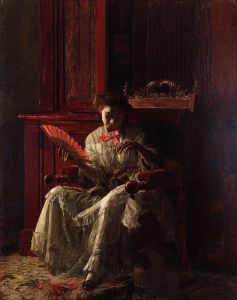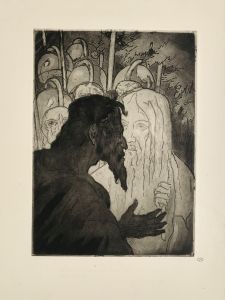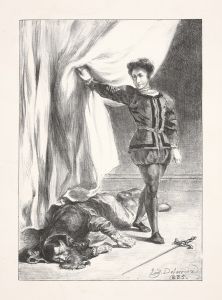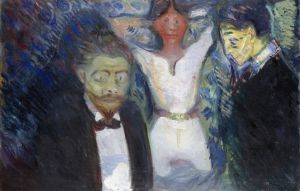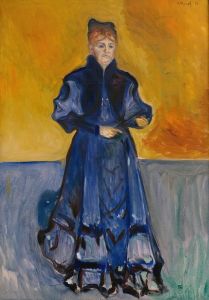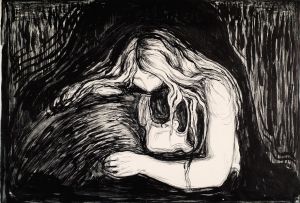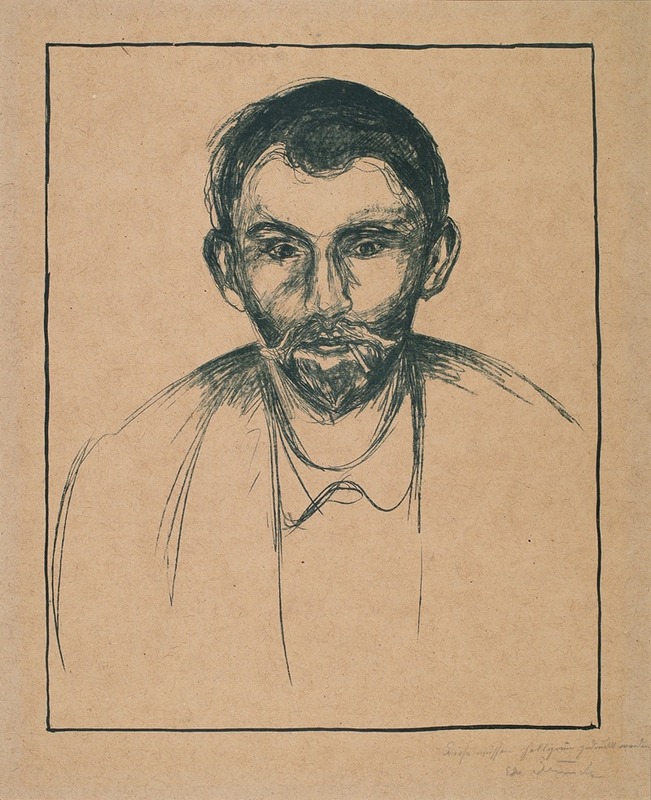
Stanislaw Przybyszewski
A hand-painted replica of Edvard Munch’s masterpiece Stanislaw Przybyszewski, meticulously crafted by professional artists to capture the true essence of the original. Each piece is created with museum-quality canvas and rare mineral pigments, carefully painted by experienced artists with delicate brushstrokes and rich, layered colors to perfectly recreate the texture of the original artwork. Unlike machine-printed reproductions, this hand-painted version brings the painting to life, infused with the artist’s emotions and skill in every stroke. Whether for personal collection or home decoration, it instantly elevates the artistic atmosphere of any space.
Edvard Munch, the renowned Norwegian painter, created the portrait Stanislaw Przybyszewski in 1895. This artwork depicts the Polish writer and intellectual Stanisław Przybyszewski, a prominent figure in the European bohemian and Symbolist movements of the late 19th century. Przybyszewski was known for his literary works, philosophical ideas, and his connections to avant-garde circles, making him a fitting subject for Munch, whose art often explored themes of existentialism, emotion, and the human psyche.
The portrait was painted during a period when Munch was closely associated with the Berlin art scene, where he mingled with a group of artists, writers, and thinkers who were part of the Symbolist and Decadent movements. Przybyszewski, who lived in Berlin at the time, was a central figure in this milieu. He was also an early supporter of Munch's work, writing essays that praised the emotional depth and innovative style of the Norwegian artist's paintings. Their mutual respect and shared interests in exploring the darker aspects of human existence likely contributed to the creation of this portrait.
In the painting, Munch employs his characteristic style, using loose, expressive brushstrokes and a muted color palette to convey the psychological depth of his subject. Przybyszewski is depicted with a somber and introspective expression, his face emerging from a dark, undefined background. This approach emphasizes the intellectual and enigmatic qualities of the writer, aligning with Munch's broader artistic focus on capturing the inner emotions and essence of his subjects rather than their physical likeness.
The portrait is considered an important example of Munch's portraiture, which often went beyond traditional representation to delve into the psychological and emotional states of his sitters. It also reflects the close cultural and intellectual exchanges between artists and writers in late 19th-century Europe, particularly within the Symbolist movement.
Today, the painting is recognized as a significant work within Munch's oeuvre, highlighting his ability to merge personal relationships with his artistic exploration of human emotion. The exact location of the painting is not widely documented, but it remains a notable example of Munch's engagement with literary and intellectual figures of his time.






